Visit our Online Store
Traditional must-have Indian dishes for Janmashtami
Aug 23, 2019
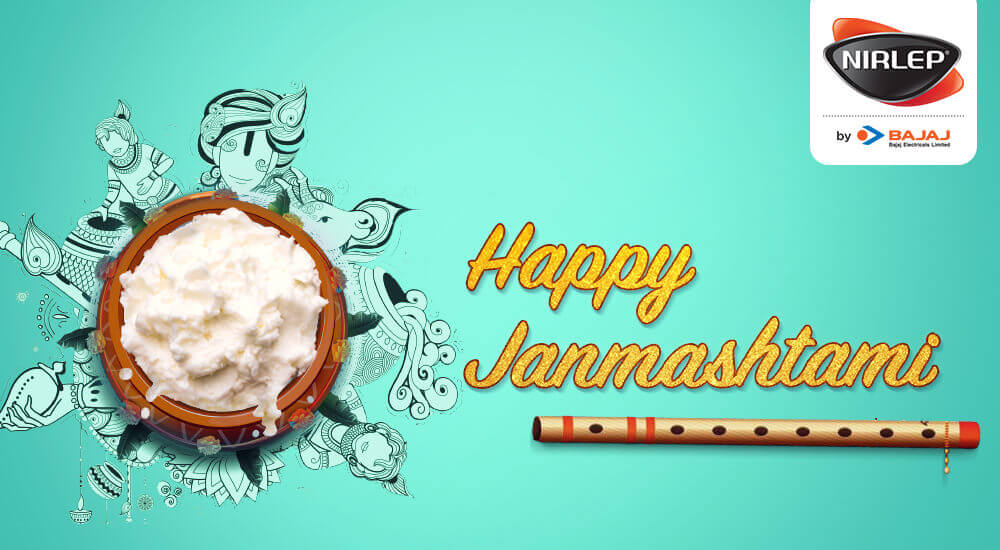
From Eid to Rakshabandhan, the season of festivals is indeed here! Come August 24, Indian households will celebrate Janmashtami to celebrate the birth of Lord Krishna, who is believed to be the eighth incarnation of Lord Vishnu on earth. On this day, Krishna devotees wake up early, take a bath and worship their beloved deity. In Maharashtra, there is a separate tradition called ‘Dahi Handi’, where a group of young men form human pyramid to break an earthen pot of yoghurt which has been tied at a substantial height, emulating Lord Krishna’s childhood antics.
Janmashtami is celebrated with great enthusiasm throughout the country and is incomplete without having some scrumptious food and sweets. Take a look at some of the traditional must-have Indian recipes during this festival:
Singhare Ki Puri:
A gluten free puri recipe from North India made from water chestnut flour and boiled mashed potato, this can be consumed during fasting.
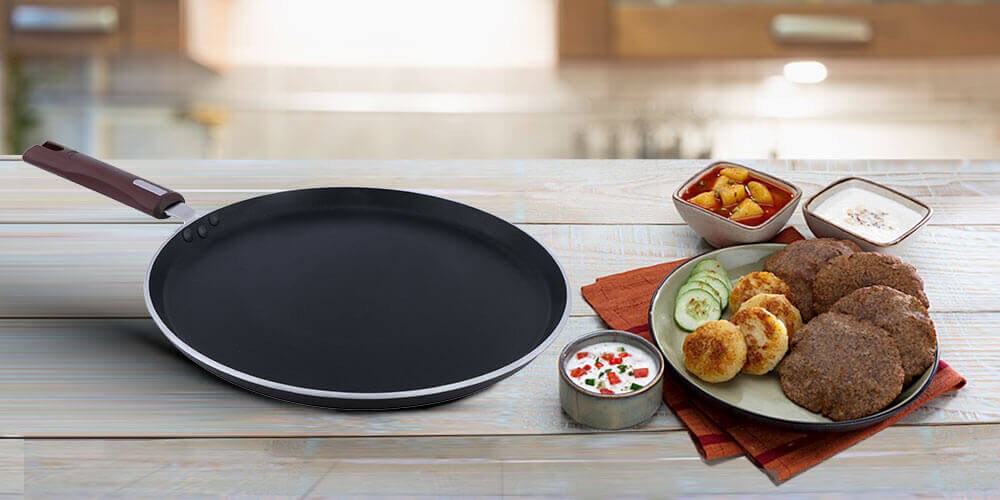
Ingredients:
| Singhare ka atta (Water Chestnut flour) - ¾ cup |
| Potatoes - ½ cup boiled, peeled and mashed |
| Cilantro or coriander leaves chopped |
| Rock salt (Sendha namak) – As per taste |
| Oil for deep frying |
Procedure:
For Dough
Step 1: Boil potatoes in a pressure cooker and allow it to cool down for few minutes. Mash it till it becomes smooth. Make sure that there are no chunks left otherwise your puris will not puff.
Step 2: Take a large bowl and take the Singhara flour, rock salt, boiled potato and cilantro. Mix them well.
Step 3: Without adding any water, start kneading and make it a smooth dough.
For singhare ki puri:
Step 4: Divide the dough into equal portions. Make smooth ball and pat a small puri in the palm of your hand.
Step 5: Heat oil in a pan on medium-high flame for frying. You may use Nirlep Sakhi 3.5 Ltr Non Stick Kadhai with Lid for a better frying experience. Slide one puri into hot oil and fry.
Step 6: Once it has browned and puffed, over and fry other side as well.
Step 7: Remove the puris and place them on paper towels to remove excess oil.
Tip: Serve puris hot with vrat ke aloo or dahi aloo or dahi arbi.
Uppu Seedai:
Popular majorly in South India, Seedai is one of the must make snacks for Janmashtami. Yummy, crunchy and savoury this you cannot avoid
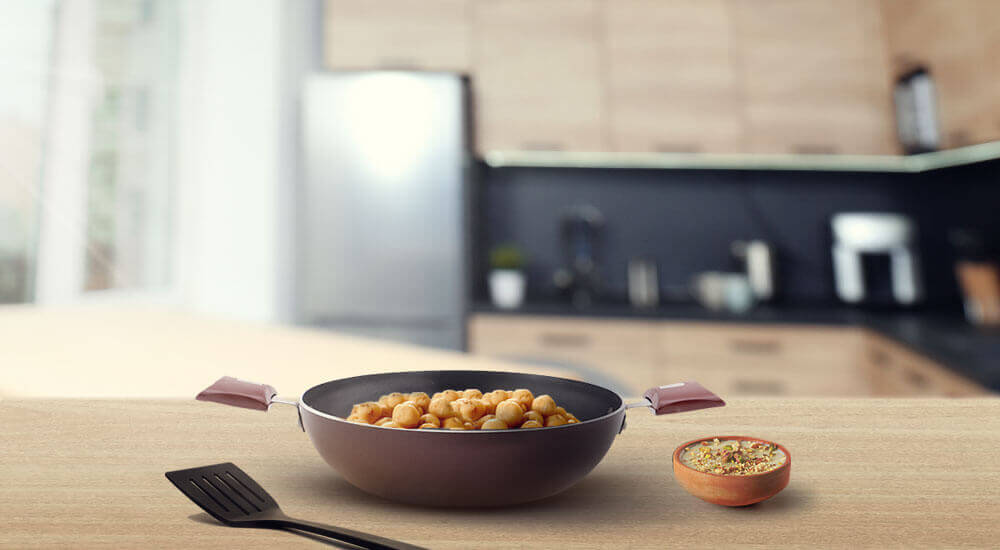
Ingredients:
| Rice flour - 1 cup |
| Urad dal - 1 tbsp |
| Coconut (grated) - 1 tblsp |
| Sesame seeds - 1 tbsp |
| Cumin powder - 1/4 tsp (optional) |
| Butter - 1 tbsp |
| Oil for deep frying |
| Salt – As per taste |
Procedure:
Step 1: Take a pan and dry roast Urad dal till it turns golden brown. Click here to check out Nirlep’s whole range of non-stick pans.
Step 2: Allow the mixture to cool down for few minutes. Once it cools down, take all the ingredients and put it in a mixer grinder to make fine powder.
Step 3: Take a dry pan and roast the rice flour and urad dal flour on low flame for about 1-2 mins. You may use Nirlep Select plus J Class 24 Cm Non Stick Fry Pan with Lid for the purpose.
Step 4: Sieve this flour and roast it again. Repeat this process for almost 2-3 times.
Step 5: Add sesame seeds and grated coconut and roast till slightly brown.
Step 6: Take a large bowl and add the roasted flour, butter, cumin powder, roasted sesame seeds, roasted coconut, and salt and mix well.
Step 7: With the help of some water, knead it into a smooth soft pliable dough. It is advisable not to make the dough too tight, otherwise the seedai balls will develop cracks and also crackle while frying.
Step 8: Divide the dough into small balls and grease them with butter
Step 9: Heat oil in a deep kadhai for frying. Nirlep Ebony 3.5 Ltr Hard Anodized Induction Kadhai with Lid would be the best bet for this.
Step 10: When the oil becomes hot, deep fry seedai balls till it turns golden brown.
Step 11: Remove the seedai with a slotted ladle and transfer to a colander to drain the excess oil. Your Uppu Seedai is ready to serve!
Tip: Seedai turns soft the next day. So, it is advisable to consume it on the same day to relish its best taste!
Also Read: 9 Delicious Bengali Sweets to Indulge in this Festive Season!
Shakarpara:
Majorly famous in West India, Shakarpara or Shankarpali is an extremely addictive snack that often finds its way in any festive sweet platter! It is rich in carbohydrates, making it an instant source of energy. Depending on how it is made, Shakarpara can be sweet, spicy or sour!
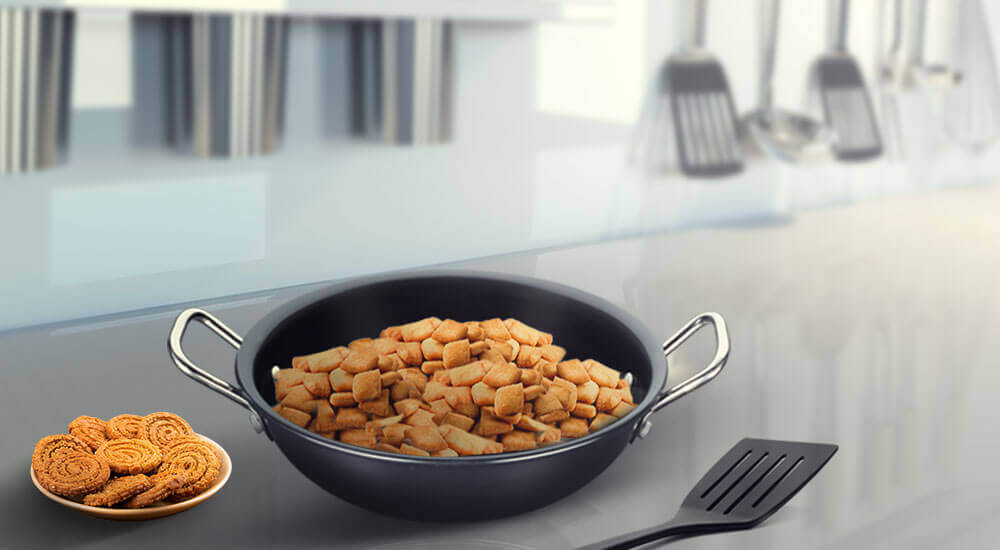
Ingredients:
| Maida / plain flour / all-purpose flour – 1 cup |
| Sugar - ¼ cup |
| Water - ¼ cup |
| Semolina or rava – 1-2 tbsp |
| Cardamom powder / elaichi powder - ¼ tbsp |
| Ghee – 2tbsp |
| oil for deep frying |
| Salt – As per taste |
Procedure:
Step 1: Take a mixing bowl, dissolve sugar and water. Let it rest for few minutes.
Step 2: Now add Maida, rava, cardamom powder, ghee, salt and mix well.
Step 3: Knead to a smooth and soft dough.
Step 4: Now roll it like a round paratha. Once done, cut it in diamond shape and size of your choice.
Step 5: Take a kadhai and deep fry Shakarpara in hot oil. Stir occasionally keeping the flame on medium range. For a better cooking experience, you may use Nirlep Ebony 2.5 Ltr Hand Anodized Kadhai with Lid.
Step 6: Fry till the sweet savoury turns golden and crisp.
Step 7: Drain over kitchen towel to remove excess oil.
Tip: Let them completely cool off before storing it in an airtight container.
Sabudana Khichdi:
Extremely simple yet so flavourful, this vegan and gluten-free dish is extremely popular in India, during the festive season. Sabudana khichdi is a delicious dish of tapioca pearls (sabudana) made with potatoes, peanuts and is typically prepared in parts of Western India such as Maharashtra, Karnataka, Uttar Pradesh, Madhya Pradesh, Rajasthan and Gujarat.
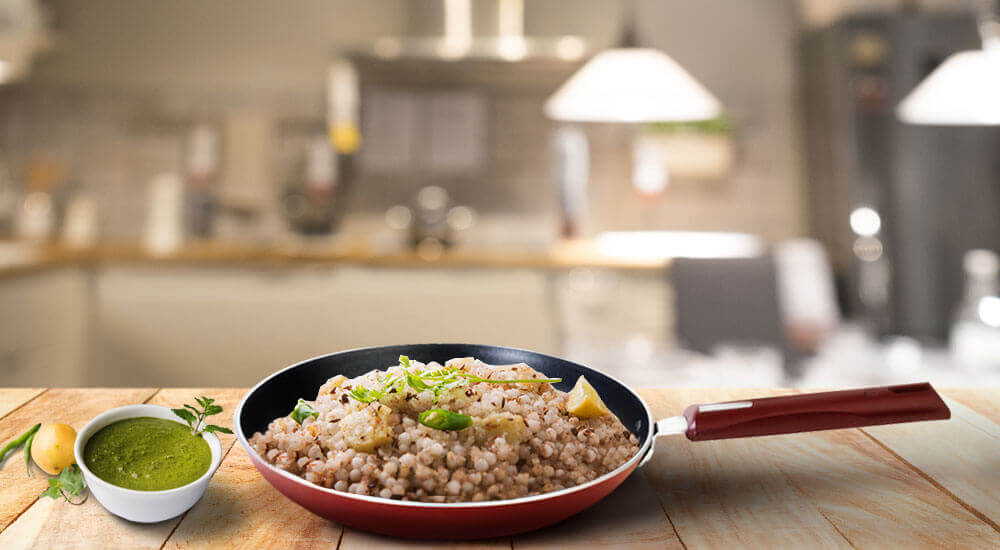
Ingredients:
| Sabudana – 2cups |
| Water – 2 cups |
| Cumin seeds – 1tbsp |
| Curry leaves – 3-4 |
| Ginger - ½ tbsp, grated |
| Green chillies – 2, chopped |
| Potatoes – 2, peeled and cubed |
| Peanuts - ½ cup roughly crushed roasted |
| Sendha namak – As per taste |
| Sugar – 2tbsp |
| Lemon juice - 1 tbsp |
| Cilantro or coriander – Fistful, chopped |
| Peanuts - ½ cup roughly crushed, roasted |
| Oil – 2-3 tbsp |
| Roasted peanuts for garnishing |
Procedure:
Step 1: Wash Sabudana under cold tap water in a colander. It is advisable to wash it properly as it will take off most of the starch and prevent sabudana from sticking.
Step 2: Take a bowl and soak sabudana by adding water for almost 4-5 hours. Remember your water level should be 1/4 inch more than sabudana level.
Step 3: Once sabudana fluffs, drain off excess water before cooking
Step 4: Take a non-stick pan and add oil. Click here to check out Nirlep’s various non-stick pans.
Step 5: Once the oil is hot, add cumin seeds.
Step 6: After the potatoes become tender, add the strained Sabudana and mix well.
Step 7: Now slowly add curry leaves, chopped ginger, chopped chilies and cook for a minute more.
Step 8: After cooking for 3-4 minutes, add sugar, salt, crushed roasted peanuts and lemon juice and mix well.
Step 9: Keep stirring occasionally and cook until the sabudana becomes a bit translucent.
Step 10: Your Sabudana Khichdi is now ready to serve! Garnish it with chopped coriander and roasted peanuts.
Tips: Serve Sabudana Khichdi hot with chilled yogurt.
That was our take on all the delicacies made on Janmashtami. Do let us know which ones are your favourite!
Happy Krishna Janmashtami!
Related: How to Cook Gajar Halwa

Comments
Be the first one to comment. See all Hide